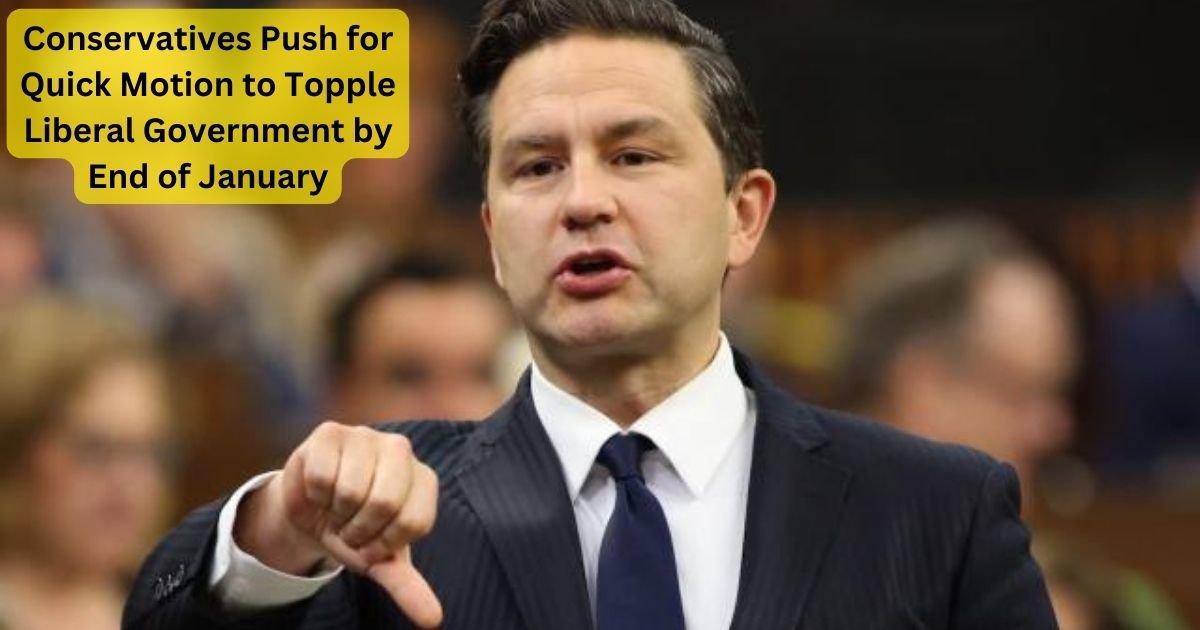By Abdul Jabbar | News Wire
OTTAWA — Conservative Leader Pierre Poilievre is ramping up efforts to force a federal election, unveiling a new strategy to quickly bring down Prime Minister Justin Trudeau’s Liberal government.
In a move aimed at securing a vote of no-confidence as soon as possible, the Conservatives plan to reconvene the Public Accounts Committee on January 7, with the goal of introducing a non-confidence motion in the House of Commons by January 27.
The party believes that if they can get the motion to a vote by the end of the month, they could trigger the collapse of the government and spark a snap election. The plan does not rely on the usual “opposition day” — which is scheduled by the government — but instead takes advantage of the committee’s proceedings to push forward the motion.
The move follows recent statements by NDP Leader Jagmeet Singh, who indicated that his party is ready to help bring down the government in the new year. Singh’s comments, in which he called on Trudeau to step down after Deputy Prime Minister Chrystia Freeland’s resignation, have further fueled opposition momentum. Singh’s declaration that the Liberals “don’t deserve another chance” signals that the NDP could align with the Conservatives and Bloc Québécois to defeat the government.
A request for comment from the NDP was not returned before publication.
Should the motion pass in the House, it will be the first significant test of confidence since Freeland’s departure. Her resignation in December caused major ripples in the Liberal Party, with some MPs openly calling for Trudeau’s resignation, while others praised Freeland for her bold stance.
Since then, Trudeau has shuffled his cabinet and spent Christmas in Ottawa, but his whereabouts have raised questions about his next steps. Reports suggest he is now in British Columbia with no public events scheduled.
The Conservatives’ motion, which will be introduced in the Public Accounts Committee, will call for the House of Commons to endorse the committee’s recommendation of non-confidence in both the Prime Minister and his government.
This strategic move is likely to spark debate among constitutional scholars. In 2005, a similar maneuver by opposition parties resulted in the House instructing a committee to recommend the resignation of the government. However, the Liberals at the time argued that such a motion was purely procedural and not a true confidence vote.
This time, legal experts suggest that the situation may differ. Constitutional lawyer Lyle Skinner contends that if the committee’s report is adopted by the House, it could indeed count as a non-confidence motion. “If the committee does report non-confidence and the House accepts it, it would be hard to argue that this is just a procedural motion,” Skinner wrote.
Conservative strategist Mitch Heimpel argued that the plan is designed to apply pressure on both the Liberal government and the NDP. He noted that reconvening the committee during the parliamentary break would keep the focus on Parliament and force some Liberal MPs, especially those critical of Trudeau, into difficult positions. “This forces Liberal backbenchers to either defend Trudeau or take action to protect their seats,” Heimpel said.
The move also complicates any plans Trudeau may have had to reset his party’s agenda in the new year. Speculation has swirled that the Prime Minister might seek to prorogue Parliament to avoid a confidence vote and reset the political landscape. However, the Conservative strategy could make such a move appear like an attempt to evade a direct challenge to the government’s stability.
If the motion reaches the House and is adopted, the Governor General could be forced to consider a change in leadership, potentially paving the way for an early election. The pressure is mounting as Poilievre and other opposition leaders push for the government’s downfall by the end of January.
Read More News:
AI Agents Set to Revolutionize Workflows in 2025: From Microsoft to Nvidia Leading the Charge
